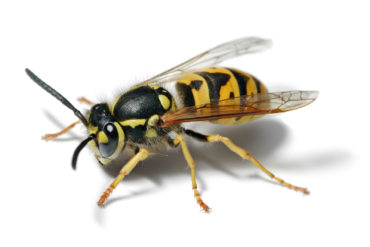

The yellow jacket is a type of flying insect that has a stinger. The sting is very painful. It is classified as a wasp. The yellow jacket is considered aggressive. Usually if you see one yellow jacket there are many more in the area. They tend to stay pretty close to their nest.
The yellow jacket is not a pollinator like bees and some others wasps. It feeds on insects. This is probably what makes it aggressive and not as docile as the honey bee. It is always on the attack.
If you get stung by one yellow jacket, the best idea is to get out of that area fast. There are many more coming for you. They work together on larger perceived threats.
The yellow jacket burrows in the ground or in the side of structures or hills. They create a small hole from which they enter and exit their nest. Many humans stumble upon them because there are little to no warning signs. If enough yellow jackets sting you it can be life threatening. If you are allergic to insect stings, only one can be life threatening.
The yellow jacket is also known as the European wasp, German wasp, or German yellowjacket. This is because it originated in the southern Europe/Northern Africa area of the world. It has since spread to most continents and has been able to take hold without little problem.
It is believed that their relatively rapid expansion has been aided by human travel. This is the case with most invasive species.
The yellow jacket will set up shop near food and water source. If there is an area where there are plenty of insects for them to feast, they will be attracted to it.
Your backyard garden attracts insects. So, naturally it attracts insect predators as well. It is a good idea to have your garden some distance away from the home.
It is also a good idea to keep brush and bushes trimmed. Check your property for activity. If you are under attack by yellow jackets call a licensed pest control agent.
